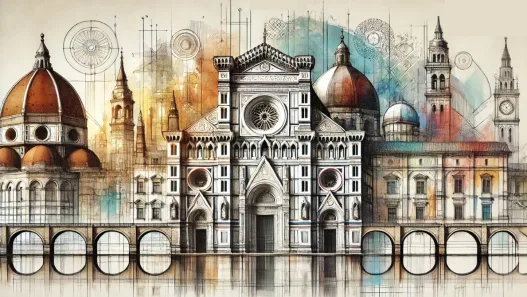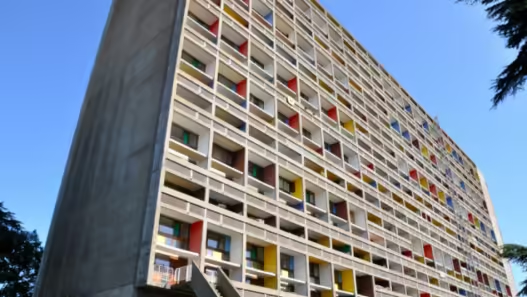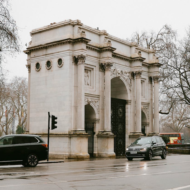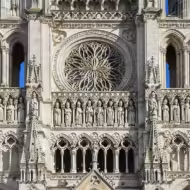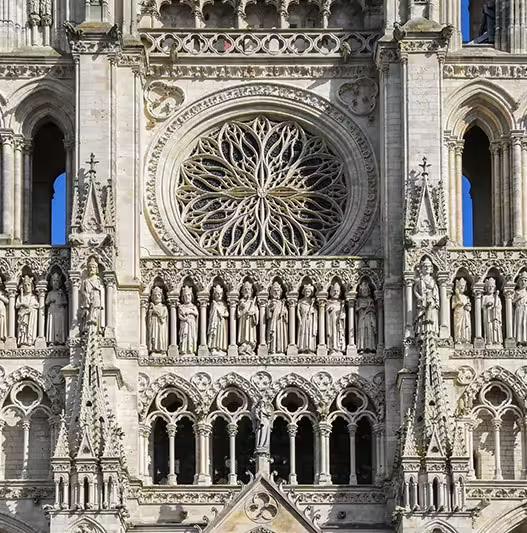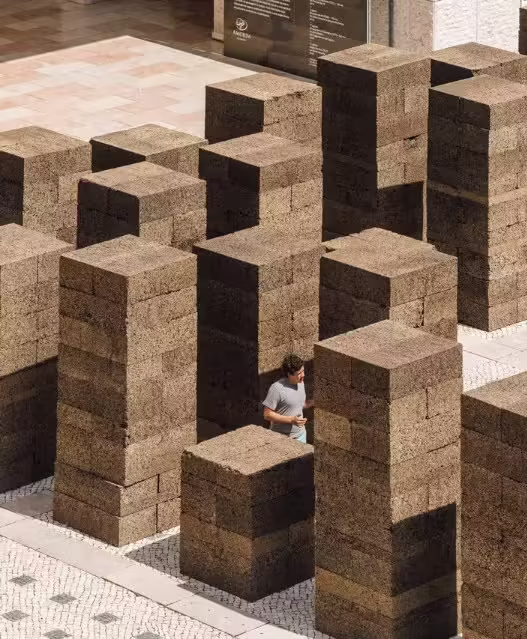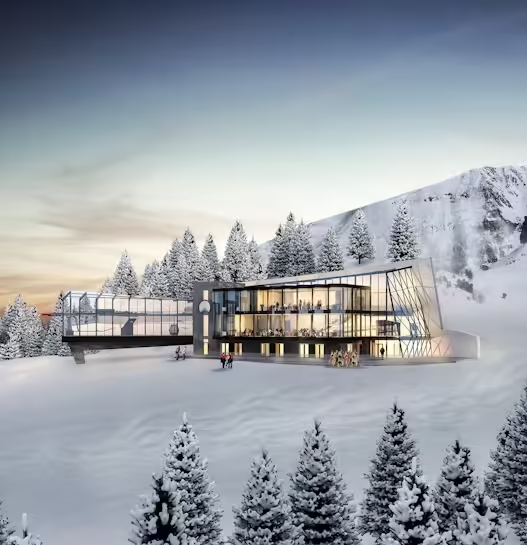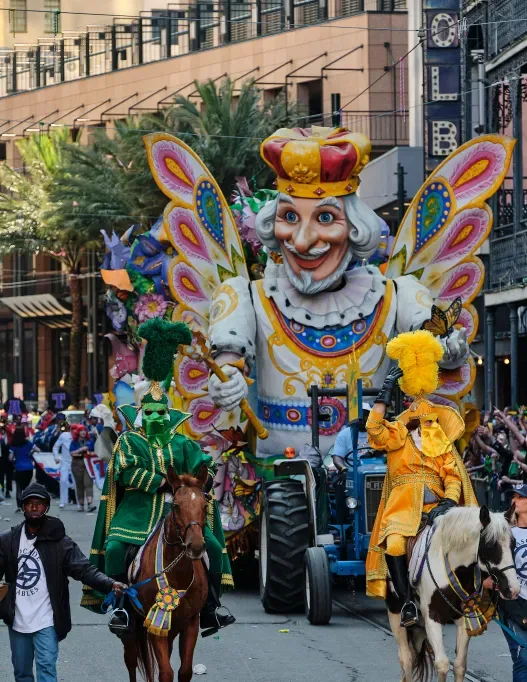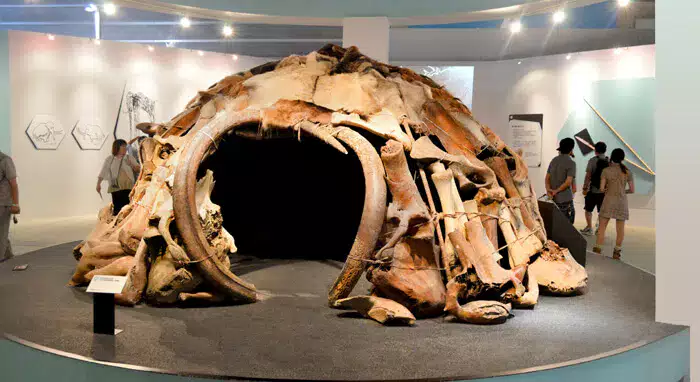Reinforced concrete, a material that revolutionized architecture in the 20th century, became the foundation of a bold and expressive architectural movement known as Brutalism. This combination of materials and aesthetics challenged traditional notions of beauty and function, creating a distinct and often controversial style that continues to fascinate and provoke.
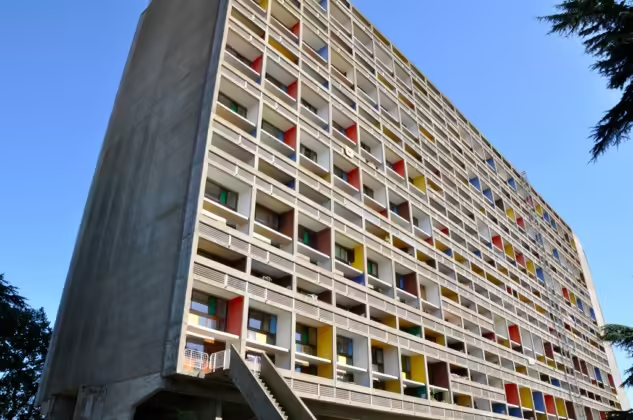
Defining Reinforced Concrete: Composition and Structural Properties
Reinforced concrete, a composite material, combines the compressive strength of concrete with the tensile strength of steel to create an extremely strong and versatile building material.
- Composition: Reinforced concrete is a mixture of cement, aggregate (sand and gravel) and water, reinforced with steel bars or mesh.
- Structural Properties: Steel reinforcement prevents concrete from cracking under tension, allowing it to withstand significant loads and form complex shapes. This strength and versatility made reinforced concrete ideal for the construction of large and complex structures such as bridges, dams and high-rise buildings.
Historical Context: The Birth of Brutalist Architecture
Brutalism emerged in the mid-20th century as a response to the perceived sterility and elitism of International Style modernism. It sought to create a more honest and expressive architecture that directly reflected the materiality of the building.
- Post-War Context: The devastation of the Second World War and the subsequent need for rapid reconstruction created a demand for affordable and durable building materials, making reinforced concrete a logical choice.
- Early Pioneers: Architects such as Le Corbusier, who experimented with reinforced concrete in the 1920s and 1930s, paved the way for the development of Brutalist architecture.
- The Term“Brutalism“: The term “Brutalism” is derived from the French word “béton brut”, meaning “raw concrete”, and reflects the movement’s emphasis on bringing out the natural texture and color of the material.
Cultural Significance: Brutalism as a Response to Modernism
Brutalism emerged as a reaction to the perceived coldness and impersonality of International Style modernism, seeking to create a more human-centered and expressive architecture.
- Social Concerns: Brutalism often addressed social issues such as housing shortages and urban regeneration, seeking to create functional and affordable spaces for the masses.
- Expressionism: Brutalism embraced the raw and expressive qualities of reinforced concrete, using texture and color to create a sense of honesty and authenticity.
- Anti-Elitism: Brutalism challenged the elitism of modernism and sought to create architecture that was accessible and relatable to ordinary people.
Understanding the Relationship between Materials and Aesthetics in Brutalism
The aesthetics of Brutalism are inextricably linked to the materiality of reinforced concrete. The movement’s architects embraced the raw, bare texture and color of concrete and used it to create a sense of honesty and authenticity.
- ExposedConcrete: Brutalism is characterized by the use of exposed concrete, often left unfinished, showcasing the natural texture and color of the material.
- Geometric Forms: Brutalism often uses simple, geometric forms that reflect the structural logic of reinforced concrete and create a sense of solidity and permanence.
- Textural Contrast: Brutalism often uses contrasting textures, such as smooth concrete surfaces juxtaposed with rough aggregate or exposed steel, creating a dynamic and visually engaging aesthetic.
Global Trends: The Spread of Brutalist Architecture in the Mid-20th Century
Brutalism spread rapidly in the mid-20th century and became a dominant architectural style in many countries, particularly in Europe and North America.
- Europe: Brutalism flourished in Europe, with notable examples in England, France and Germany, where it was used for housing projects, public buildings and universities.
- North America: Brutalism also gained popularity in North America, with iconic examples in the United States and Canada, where it was used for government buildings, libraries and museums.
- International influence: Brutalism’s influence extended beyond Europe and North America, with examples of Brutalist architecture appearing in countries such as Japan, Australia and South America.
The combination of reinforced concrete and the aesthetics of Brutalism created a powerful and enduring architectural style that continues to inspire and provoke. Its emphasis on honesty, functionality and social responsibility, combined with its bold and impressive forms, left an indelible mark on the architectural landscape of the 20th century.
Aesthetic Qualities of Reinforced Concrete in Brutalist Design
The aesthetics of Brutalism are deeply intertwined with the materiality of reinforced concrete. The movement’s architects embraced the raw, exposed texture and color of concrete, using it to create honesty, authenticity and a strong visual impact.
Raw Materiality Emphasizing the Texture and Form of Concrete
Brutalism celebrated the natural qualities of reinforced concrete, showcasing its natural texture and color rather than trying to hide them.
- ExposedConcrete: Brutalism is characterized by the use of exposed concrete, often left unfinished, which showcases the natural texture and color of the material. This can range from the smooth, polished surface of a carefully finished wall to the rough, aggregate-filled texture of a cast-in-place element.
- Form Following Function: Brutalism’s emphasis on form following function meant that the shape and texture of concrete elements was often dictated by their structural purpose. This created a sense of honesty and authenticity in which the natural qualities of the material were celebrated rather than hidden.
- Color Palette: Brutalism’s color palette is usually limited to the natural tones of concrete, ranging from light gray to dark brown, creating a sense of austerity and simplicity. The use of contrasting colors, such as bright accents or exposed steel, can add visual interest and emphasize the texture of the material.
Monolithic Structures: The Visual Impact of Large Concrete Forms
Brutalism often used large, monolithic concrete forms to create a sense of solidity, permanence and strength.
- Colossal Scale: Brutalism’s use of reinforced concrete allowed architects to create structures of unprecedented scale with massive concrete walls, columns and beams. This scale created a sense of awe and grandeur, emphasizing the strength and durability of the material.
- Geometric Forms: Brutalism often uses simple, geometric forms that reflect the structural logic of reinforced concrete and create a sense of solidity and permanence. These forms can be linear, curvilinear or a combination of both, creating a dynamic and visually engaging aesthetic.
- Visual Unity: The use of large, monolithic concrete forms creates a sense of visual unity where the building appears as a single, cohesive entity rather than a collection of disparate elements.
Integration with the Landscape: Interaction between Buildings and their Environment
Brutalism often sought to integrate buildings with the surrounding landscape, using concrete to create a sense of continuity between the built environment and the natural world.
- Site Specific Design: Brutalism often emphasized site specific design, where the form and orientation of the building is carefully considered in relation to the surrounding landscape. As a result, buildings appear to grow organically from the site rather than being imposed on it.
- Materiality and Context: Brutalism’s use of exposed concrete allowed the building to blend seamlessly with its surroundings, creating a sense of harmony between the built environment and the natural world. The texture and color of the material could be chosen to complement the surrounding landscape, creating a sense of unity and place.
- Landscaping and Planting: Brutalism often incorporated landscaping and planting into the design of buildings, using vegetation to soften the edges of concrete structures and create a more inviting and human-scale environment.
Notable Examples: Iconic Brutalist Buildings Exhibiting Reinforced Concrete
Iconic Brutalist buildings around the world demonstrate the aesthetic potential of reinforced concrete.
- Barbican Centre, London: This multipurpose complex features a series of interconnected concrete structures that showcase the material’s ability to create complex and dynamic forms.
- The National Theater, London: Designed by Denys Lasdun, this iconic building features a series of massive concrete blocks that create a strong and imposing presence on the South Bank.
- Boston City Hall, Boston: Designed by Kallmann McKinnell & Knowles, this controversial building features a series of concrete towers and a central plaza, showcasing the material’s ability to create a sense of urban grandeur.
Case Studies: Aesthetic Exploration of Reinforced Concrete in Brutalism
The architects of Brutalism explored the aesthetic potential of reinforced concrete in a variety of ways, creating buildings that are both functional and visually striking.
- Le Corbusier’s Unité d’Habitation, Marseille: This iconic residential project features a series of concrete balconies and walkways, creating a sense of community and connection to the surrounding landscape.
- Alison and Peter Smithson’s Robin Hood Gardens, London: Now demolished, this residential project featured a series of interconnected concrete blocks that created a sense of urban density and social interaction.
- Louis Kahn’s Salk Institute, La Jolla: This research institute includes a series of concrete laboratories and offices, showcasing the material’s ability to create a sense of calm and contemplation.
The aesthetic qualities of reinforced concrete in Brutalist design are a testament to the movement’s commitment to integrity, functionality and visual impact. Embracing the raw materiality of concrete, Brutalism has created a distinct and enduring architectural style that continues to inspire and provoke.
Structural Advantages of Reinforced Concrete in Brutalist Architecture
As the material that defined Brutalism, reinforced concrete offered a unique set of structural advantages that allowed architects to push the boundaries of design and create buildings that were both functional and visually striking.
Strength and Durability: The Performance Characteristics of Reinforced Concrete
Reinforced concrete’s inherent strength and durability made it an ideal material for Brutalist architecture and enabled the creation of large, complex structures that could stand the test of time.
- Compressive Strength: Concrete is extremely strong during compression, meaning it can withstand significant weight bearing loads. This strength allowed the Brutalists to create massive concrete columns, beams and walls capable of supporting the weight of large buildings.
- Tensile Strength: The steel reinforcement embedded in the concrete provides tensile strength, allowing the material to resist cracking and flexing under tension. This combination of compressive and tensile strength makes reinforced concrete a highly durable material.
- Weather Resistance: Reinforced concrete is extremely weather resistant, making it suitable for use in a variety of climates. It can withstand rain, snow, wind and temperature fluctuations, ensuring the longevity of Brutalist structures.
Flexibility in Design: Enabling Innovative Architectural Forms
The versatility of reinforced concrete allowed the Brutalists to create innovative architectural forms not possible with traditional materials.
- Complex Shapes: Reinforced concrete’s ability to be cast in complex shapes allowed architects to create curved walls, cantilevered balconies and other unusual forms. This flexibility enabled the creation of buildings that were both functional and visually striking.
- Wide Spans: The strength of reinforced concrete allowed the creation of wide spans, eliminating the need for supporting columns and creating open, airy spaces. This was particularly important in Brutalist buildings, which often had large, open-plan interiors.
- Integration with the Landscape: The ability of reinforced concrete to be cast in situ allowed buildings to integrate seamlessly with the surrounding landscape. Architects were able to create structures that seemed to grow organically from the landscape, rather than being imposed on it.
Cost Effectiveness: Economic Benefits of Using Reinforced Concrete
Reinforced concrete offered a cost-effective solution for the construction of large and complex structures, especially in the post-war period when resources were scarce.
- Affordable Material: Concrete is a relatively inexpensive material, making it an attractive option for large-scale construction projects. The use of reinforced concrete has allowed architects to build structures that are both economical and durable.
- Construction Efficiency: Reinforced concrete can be poured on site, reducing the need for labor-intensive construction methods. This efficiency helps keep construction costs low, making it a viable option for large-scale projects.
- Long-Term Savings: The durability of reinforced concrete meant that buildings could stand the test of time, reducing the need for costly repairs and maintenance. This long-term cost-effectiveness made concrete a popular choice for public buildings and infrastructure projects.
Fire Resistance: Safety Properties of Concrete Structures
Reinforced concrete is highly resistant to fire and provides an important safety advantage in buildings.
- Non-Combustible Material: Concrete is a non-combustible material, which means it does not burn or contribute to the spread of fire. This makes it a safe material for use in buildings, especially high-rise structures.
- Fire Protection: The concrete itself provides a layer of fire protection that slows the spread of flames and protects steel reinforcement from heat damage. This fire resistance helps to ensure the structural integrity of buildings in the event of a fire.
- Safety for Building Occupants: The fire resistance of reinforced concrete provides a safe environment for building occupants, allowing time for evacuation in case of fire. This safety feature is particularly important in public buildings where large numbers of people may be present.
The structural advantages of reinforced concrete played a crucial role in the development of Brutalism, enabling architects to create buildings that were both functionally and visually stunning. The material’s strength, durability, flexibility, cost-effectiveness and fire resistance made it an ideal choice for this bold and innovative architectural movement.
Environmental Impacts of Reinforced Concrete in Brutalism
While the aesthetic and structural advantages of Brutalism are undeniable, the environmental impact of the movement’s defining material, reinforced concrete, has become a subject of increasing scrutiny. As we grapple with issues such as climate change and resource depletion, it is important to examine the environmental impact of this iconic material.
Sustainability: Environmental Impact of Concrete Production
The production of concrete, a key component of reinforced concrete, carries a significant environmental footprint.
- High Energy Consumption: The production of cement, a key component of concrete, is an energy-intensive process that requires high temperatures and significant consumption of fossil fuels.
- Greenhouse Gas Emissions: Cement production releases significant amounts of carbon dioxide, an important greenhouse gas that contributes to climate change.
- Resource Extraction: Concrete production requires the extraction of raw materials such as sand, gravel and limestone, which can have environmental impacts, including habitat destruction and water pollution.
Energy Efficiency: Thermal Properties of Concrete in Buildings
The thermal properties of concrete can affect the energy efficiency of a building by influencing its heating and cooling requirements.
- Thermal Mass: Concrete has a high thermal mass, meaning it can absorb and store heat energy. This can help regulate indoor temperatures, reducing the need for heating and cooling.
- Heat Gain: However, concrete can also absorb heat from the sun, leading to overheating in hot climates. Appropriate design considerations such as shading and ventilation are crucial to reduce this effect.
- Insulation: Concrete itself is not a good insulator, meaning it can allow heat to escape in cold climates and to enter in hot climates. Insulating concrete walls and roofs is essential to improve energy efficiency.
Recyclability: Reuse Potential of Concrete Materials
Although concrete cannot be easily recycled, there are new technologies and practices that can help reduce its environmental impact.
- Recycled Concrete Aggregate: Crushed concrete can be used as aggregate in new concrete mixes, reducing the need for virgin materials.
- Demolition and Reuse: Concrete structures can be demolished and reused in other applications, reducing waste and extending the life of the material.
- Research and Development: Ongoing research is exploring new methods for recycling concrete, including chemical treatments and innovative recycling processes.
Life Cycle Assessment: Assessing the Environmental Footprint of Brutalist Buildings
Life cycle assessment (LCA) is a tool used to assess the environmental impacts of a product or process throughout its entire life cycle, from raw material extraction to disposal.
- Environmental Footprint: LCA can help quantify the environmental footprint of Brutalist buildings by considering factors such as energy consumption, greenhouse gas emissions and resource depletion.
- Design Optimization: LCA can inform design decisions by helping architects minimize the environmental impact of their buildings by choosing sustainable materials, optimizing construction processes and adding energy-efficient features.
- Sustainable Practices: LCA can drive the adoption of sustainable practices in the construction industry by promoting the use of recycled materials, renewable energy sources and energy-efficient design principles.
The environmental impacts of reinforced concrete in Brutalism are complex and multifaceted. While the strength and durability of the material is undeniable, its environmental impact requires careful consideration. By adopting sustainable practices, exploring innovative recycling technologies and incorporating energy-efficient design principles, we can strive to minimize the environmental footprint of Brutalist buildings and ensure their legacy for future generations.
Design Considerations for Reinforced Concrete in Brutalist Architecture
Brutalism required a careful balance between aesthetic expression and practical considerations through the bold use of reinforced concrete. The architects had to overcome the unique challenges of working with this material, ensuring both structural integrity and an engaging visual impact.
Form and Function: Balancing Aesthetic and Practical Needs
Brutalism’s signature aesthetic, characterized by exposed concrete and massive forms, was not merely a stylistic choice. It was a direct result of the properties of the material and the architects’ desire to create honest and functional structures.
- Structural Logic: The form of Brutalist buildings often reflected the underlying structural logic of reinforced concrete. Massive columns, cantilevered balconies and exposed beams were not merely decorative elements, but integral parts of the building’s structural system.
- Material Honesty: By embracing the raw, unadorned texture of concrete, the Brutalists showcased its natural beauty and emphasized the material’s inherent strength and durability. This approach created a sense of honesty and authenticity in which the form and function of the building were clearly articulated.
- Functional Considerations: Brutalism’s emphasis on functionality meant that buildings were designed to meet specific needs, whether it was to provide affordable housing, create a dynamic public space, or house a research institution. The form of the building was always shaped by its intended use.
Integration with Other Materials: Hybrid Approaches in Brutalist Design
Although reinforced concrete is the dominant material in Brutalism, architects often used other materials to enhance the aesthetics and functionality of the building.
- Contrasting Textures: Brutalists often used contrasting textures to create visual interest and emphasize the materiality of concrete. Smooth concrete surfaces can be juxtaposed with coarse aggregate, exposed steel, and even wood or brick elements.
- Color Accents: While the color palette of brutalism is usually limited to the natural tones of concrete, architects have sometimes used bright color accents to highlight certain features or create a sense of dynamism.
- Functional Integration: Other materials were often integrated for functional reasons. For example, glass is used for windows and curtain walls to provide natural light and ventilation, while metal can be used for structural elements or cladding.
Building Codes and Regulations: Compliance in Concrete Construction
The use of reinforced concrete in Brutalist architecture required attention to building codes and regulations to ensure the safety and structural integrity of the buildings.
- Structural Engineering: Brutalism’s complex forms and large-scale structures required the expertise of skilled structural engineers. Engineers played a crucial role in designing concrete elements, ensuring that they could withstand the intended loads and meet safety standards.
- Fire Safety: The fire resistance of concrete was an important advantage, but architects had to ensure that buildings complied with fire safety codes. This often involved the installation of fire countermeasures such as fire-resistant cladding or sprinkler systems.
- Accessibility: Building codes also addressed accessibility requirements, ensuring that buildings are accessible to people with disabilities. This often included the inclusion of ramps, elevators and other features to make buildings usable for everyone.
Community Engagement: Involving Stakeholders in Brutalist Projects
Brutalism’s often bold and unconventional designs sometimes sparked controversy and emphasized the importance of public participation in architectural projects.
- Public Consultation: Architects have increasingly recognized the need to involve the public in the design process, seeking their views and addressing their concerns. This can include public meetings, surveys and other forms of community engagement.
- Contextual Sensitivity: Brutalism’s emphasis on integrity and functionality often meant that buildings were designed to be sensitive to their context. Architects sought to understand the needs and aspirations of the community, ensuring that the building made a positive contribution to the neighborhood.
- The Legacy of Brutalist Projects: The legacy of Brutalist projects, both positive and negative, underscores the importance of community engagement. By involving stakeholders in the design process, architects can help ensure that buildings are not only functionally and aesthetically pleasing, but also accepted and appreciated by the community.
Design considerations for reinforced concrete in Brutalist architecture are multifaceted and require a careful balance between aesthetic expression, structural integrity, building codes and community engagement. By overcoming these challenges, architects were able to create buildings that were both innovative and functional, leaving a lasting impact on the architectural landscape.
The Future of Reinforced Concrete in Brutalist Architecture
The golden age of Brutalism may have passed, but the material that defined the movement – reinforced concrete – continues to evolve and inspire. New technologies, changing environmental concerns and a growing global appreciation for the aesthetic and functional qualities of the movement are shaping the future of concrete in Brutalist architecture.
Emerging Trends: Innovations in Concrete Technology and Applications
The field of concrete technology is constantly evolving, opening up new possibilities for architects and engineers.
- High Performance Concrete: New types of concrete, such as high-performance concrete (HPC), offer increased strength, durability and resistance to weathering. This pushes the boundaries of design, enabling the creation of thinner, lighter and more complex concrete structures.
- Self-ConsolidatingConcrete: Self-consolidating concrete (SCC) is a highly fluid concrete that can be easily placed into complex forms without the need for vibration. This reduces labor costs and allows for the creation of more complex and elaborate concrete structures.
- Fiber Reinforced Concrete: Adding fibers such as steel fibers or synthetic fibers to concrete increases its tensile strength and resistance to cracking. This allows the creation of thinner concrete elements and reduces the need for traditional steel reinforcement.
Integration with Smart Technologies: The Role of Concrete in Smart Building Solutions
The integration of smart technologies is transforming the way we design and build, and concrete plays a key role in this evolution.
- Smart Sensors: Sensors can be embedded in concrete that monitor structural health, environmental conditions and energy consumption. This data can be used to optimize building performance, improve safety and reduce energy waste.
- Active Building Systems: Concrete can be used in active building systems, such as adaptive facades that respond to changes in temperature and sunlight. This can improve energy efficiency and create more comfortable and sustainable buildings.
- Sustainable Concrete: Research is underway to develop more sustainable concrete mixes by using recycled materials, reducing the carbon footprint of production and increasing the durability and longevity of the material.
Global Perspectives: The Influence of Reinforced Concrete on International Brutalist Practices
Brutalism’s influence has spread far beyond its origins in Europe and North America, inspiring architects around the world to embrace the material and aesthetic of reinforced concrete.
- Developing Economies: In rapidly developing countries, reinforced concrete is a popular and cost-effective material for large-scale infrastructure projects, residential construction and public buildings. The aesthetic and functional qualities of Brutalism have resonated with architects in these contexts.
- Contemporary Interpretations: Contemporary architects are reinterpreting the principles of Brutalism and incorporating its distinctive aesthetic and structural logic into modern designs. This has led to a revival of interest in reinforced concrete and its potential to create innovative and sustainable buildings.
- Cultural Context: The aesthetic and functional qualities of Brutalism are often interpreted differently in different cultural contexts. Architects adapt the principles of the movement to local conditions, materials and building traditions, creating a diverse and evolving global landscape of Brutalist architecture.
Resilience and Adaptation: Preparing Concrete Structures for Climate Change
As the world faces the challenges of climate change, the durability and adaptability of concrete structures is becoming increasingly important.
- Climate Resilient Design: Architects are incorporating climate-resilient design principles into concrete structures, ensuring they can withstand extreme weather events such as floods, droughts and heat waves.
- Sustainable Materials: The use of sustainable concrete mixes that incorporate recycled materials and reduce the carbon footprint of production is becoming increasingly important to minimize the environmental impact of concrete structures.
- Adaptive Reuse:Adapting existing concrete structures for new uses is an important strategy to extend the life of buildings and reduce the need for new construction. This can include retrofitting buildings with energy-efficient features, incorporating smart technologies and adapting to changing needs.
Conclusion The Lasting Impact of Reinforced Concrete on Brutalist Architecture
Reinforced concrete, the material that defined brutalism, remains a powerful and versatile tool for architects and engineers. Its strength, durability and adaptability make it an ideal material for creating innovative, functional and sustainable buildings. As technology advances, environmental concerns grow and global perspectives evolve, the future of reinforced concrete in Brutalist architecture is bright, promising a new wave of bold and innovative design that will continue to shape the built environment for generations to come.





